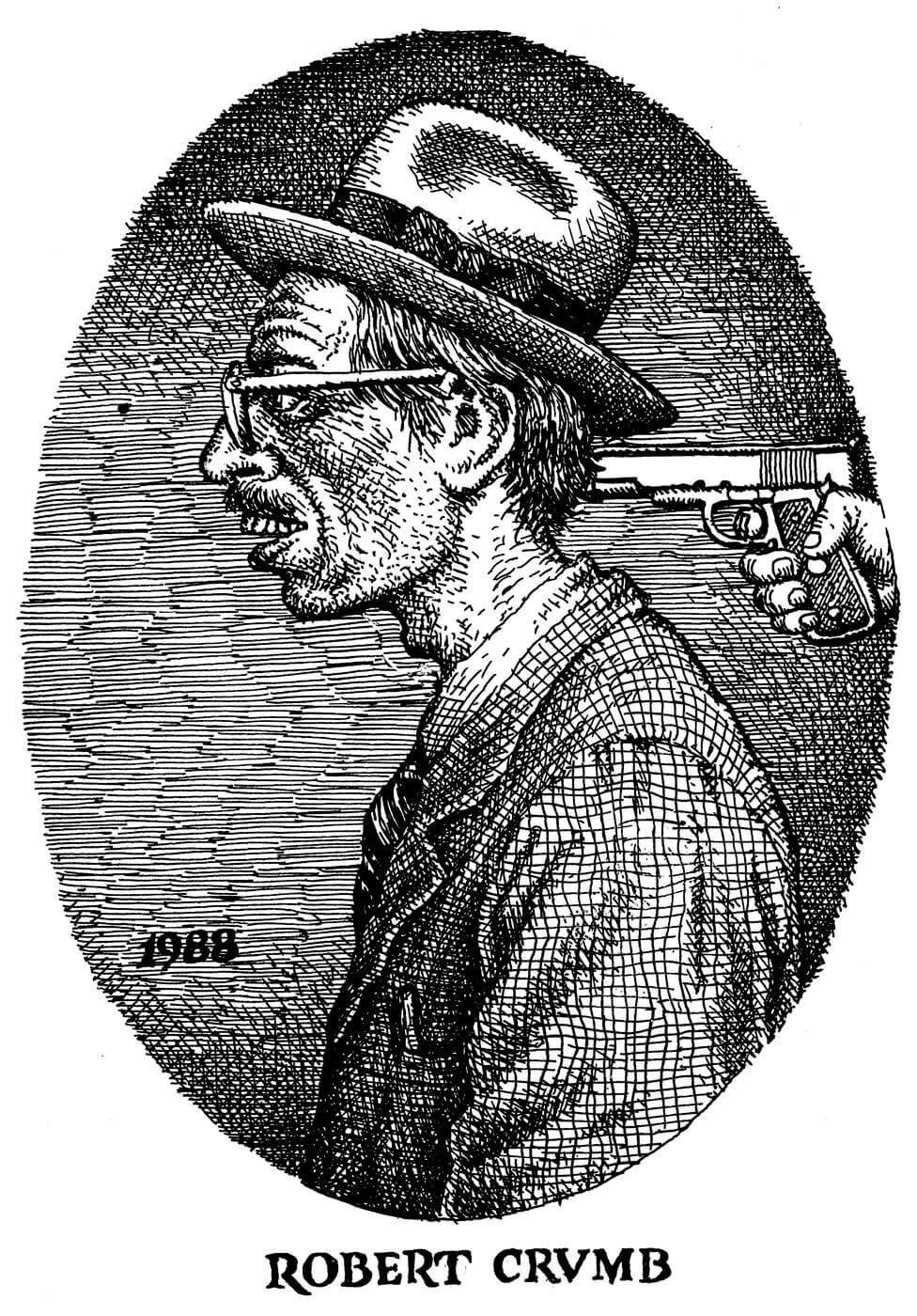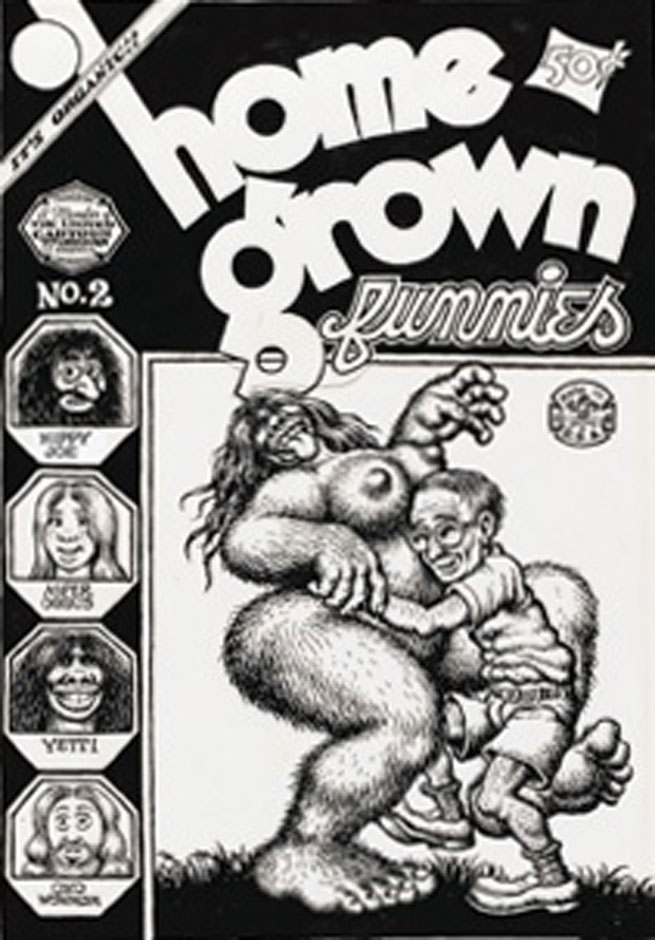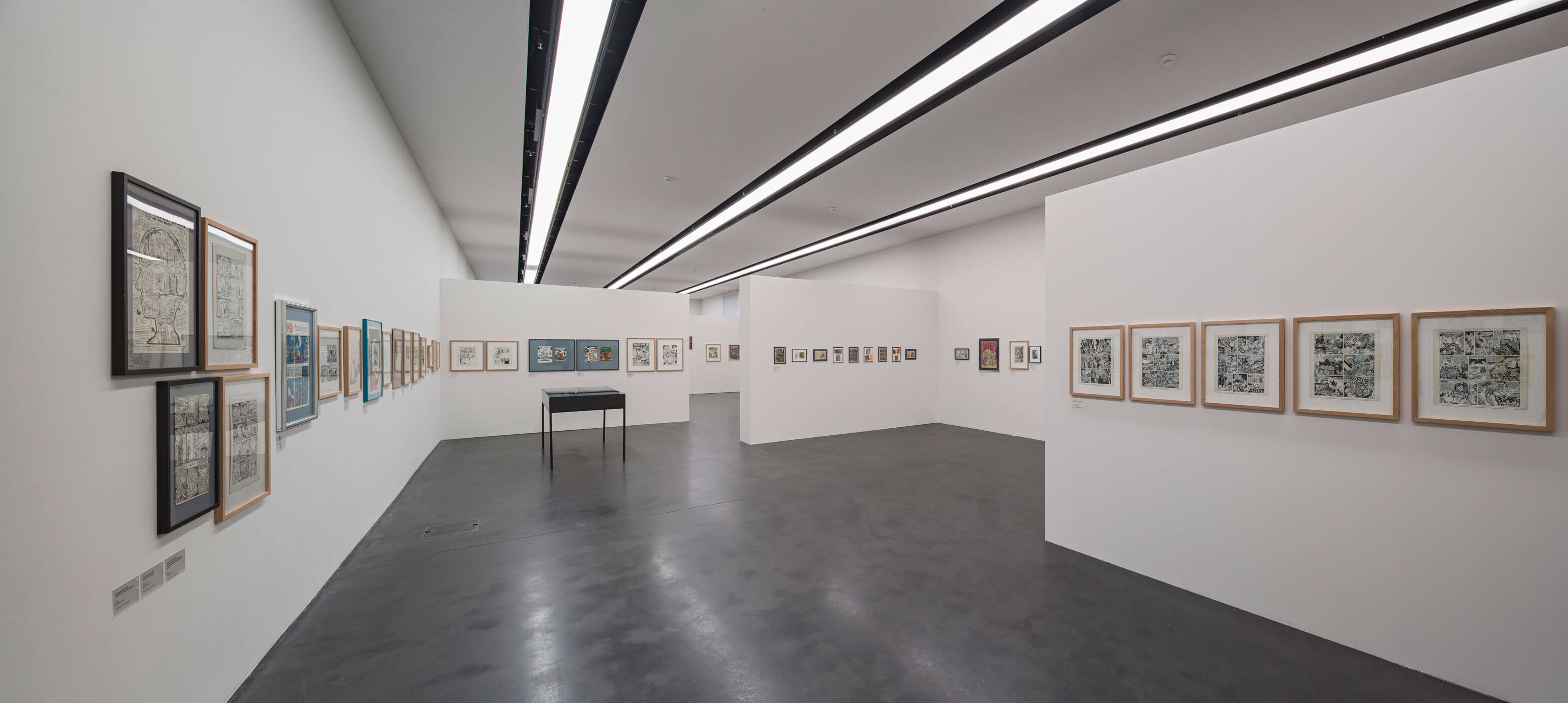Robert Crumb & The Underground
in Kooperation mit fumetto – int. comix-festival luzern
The exhibition Robert Crumb & The Underground provides an overview of an art movement that exploded during the American counterculture, starting in the late 1960s. Burning political and social issues of the era (anti-Vietnam War protests, the women’s movement, gay liberation,experimentation with mind-altering drugs, a free speech movement, and college campus takeovers) effectively divided generations, galvanizing a youth rebellion against what was viewed as the ‘establishment’.
The counterculture had already spawned underground newspapers in cities across North America and soon underground ‘comix’ joined the fray. These comix superficially resembled traditional comic books, but the interior pages were almost always black and white (for economic reasons) and featured no-holds-barred content. Young cartoonists caught up in the counterculture had seen the comic book medium in America become creatively restricted by the Comics Code Authority, a self-censoring entity created by publishers to placate distributors and parents groups upset by horror and crime comics in the late ‘40s and early ‘50s. Mainstream comic books encouraged a ‘house style’ using an assembly line creative process, and focused on fantasy and superhero themes. Cartoonists employed in that manner received one-time page rates without benefits and publishers owned the copyrights and art. Underground cartoonists typically worked alone without restriction of any kind, with little editorial influence, resulting in wildly idiosyncratic artistic styles and often dealing with previously taboo subject matter. In addition comix artists received royalties so that higher sales brought larger personal revenue, and retained their copyrights and original art. Robert Crumb’s Zap Comix was not the first underground comic. But when released in San Francisco during the 1967 Summer of Love, Zap was the first to gain wide popularity among the growing ‘hippie’ population as well as to garner national media attention. Pockets of comix artists quickly developed across America, concentrated in San Francisco, Milwaukee, Chicago and New York. Comix series like Dope Comix, Bizarre Sex, and The Fabulous Furry Freak Brothers were embraced by a large readership seeking anti-establishment voices and visions. Out of this somewhat anarchic creative environment, a wildly disparate but identifiable underground comix aesthetic developed.
curated by James Danky, Denis Kitchen und Jana Jakoubek


